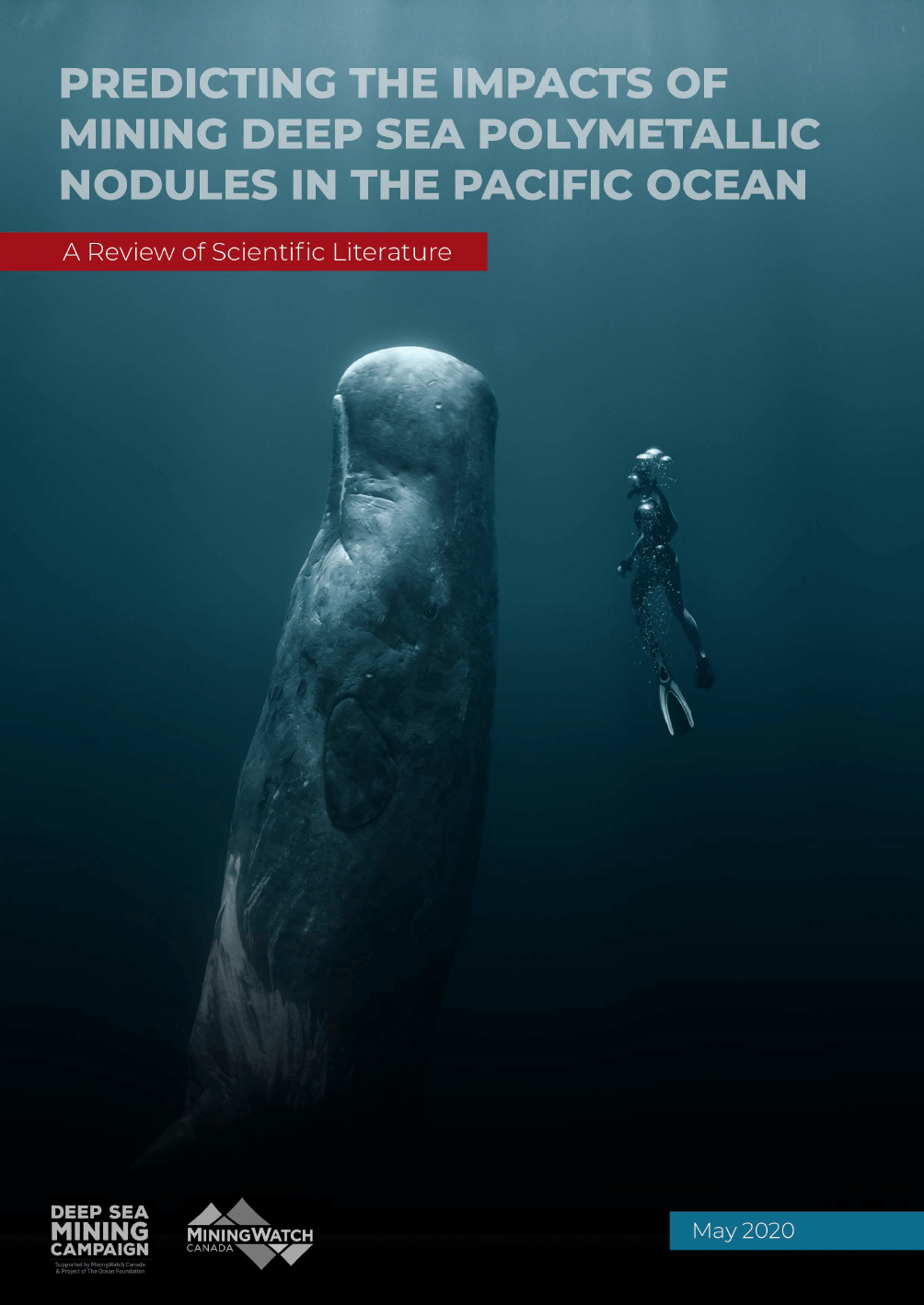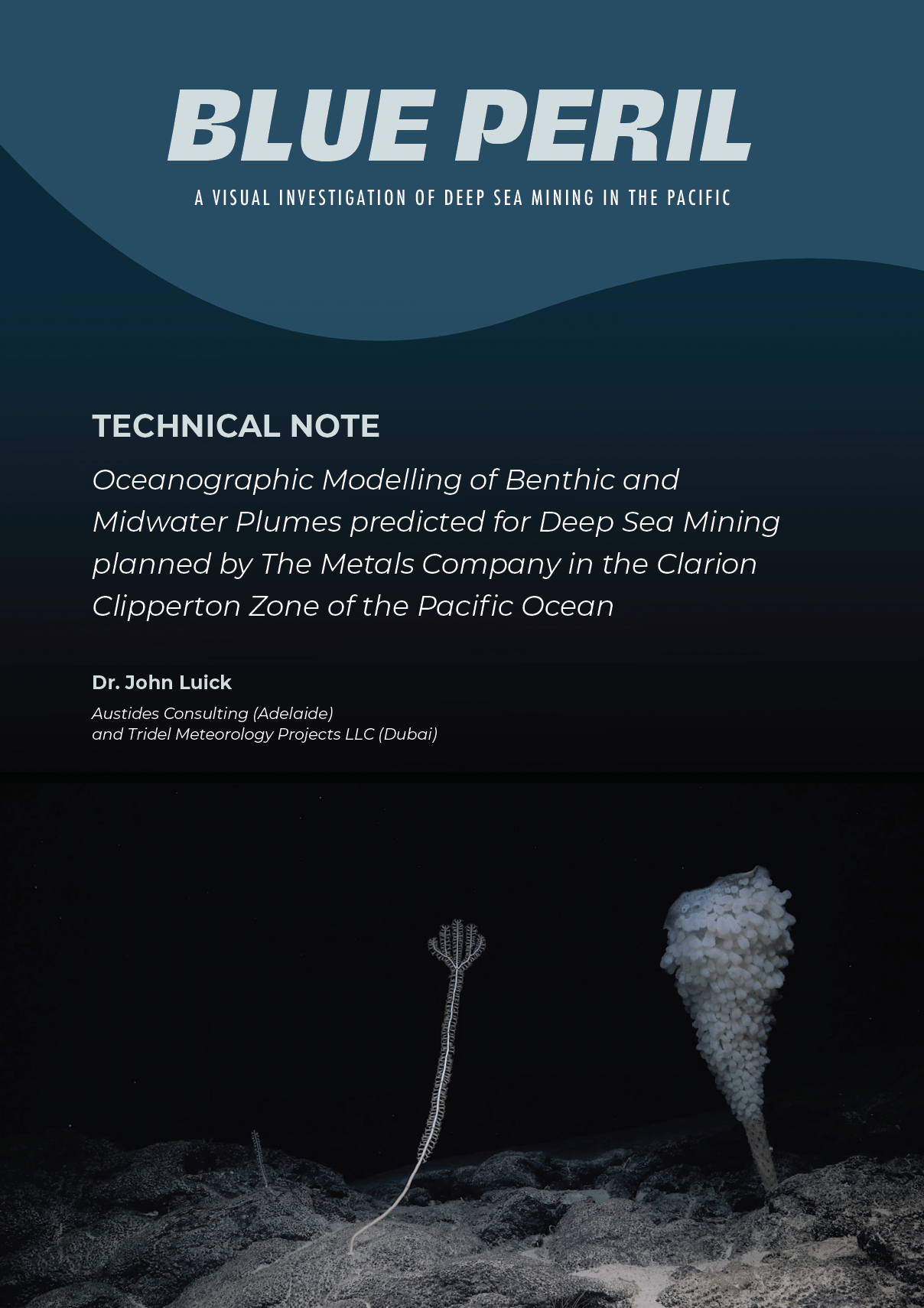WHAT ARE THE IMPACTS OF DEEP SEA MINING?
The impacts of mining deep sea mining will be extensive, severe and last for generations, causing essentially irreversible species loss and ecosystem degradation.
While extensive seabed exploration has been carried out, no commercial deep sea mining (DSM) operation has yet been established.
Approximately 2 million square kilometres of Pacific Ocean Floor is currently under exploration leasehold for deep sea mining with the very real concern that the impacts of DSM will be extensive, severe and last for generations, causing essentially irreversible species loss and ecosystem degradation
Impacts of deep sea mining
Loss of Biodiversity
Once thought to be barren, the deep sea is now known to be teeming with unique and extraordinary life forms. Despite its vast expanse, only a fraction of the deep seabed under exploration licenses has been studied, revealing just a glimpse of its rich biodiversity. Mining companies still portray the deep sea as an ecological wasteland, but emerging research highlights its vibrant and largely unexplored ecosystems.
Unknown Cumulative Impacts
The International Seabed Authority (ISA) has issued 31 exploration permits for deep sea mining to a limited group of countries that sponsor private companies covering 1.3 million square kilometres across the Pacific, Atlantic, and Indian Oceans. If even a fraction of these areas is mined, the resulting operations could span tens of thousands of square kilometers, with impacts extending far beyond. The full effects of individual mines, and especially the cumulative impacts of multiple mines, remain largely unknown.
Impact of Plumes on Marine Life and Water Quality
Deep sea mining generates sediment plumes from machinery, mining activity, accidental spills, and waste disposal. These plumes, which can spread from 200 kilometers to thousands of kilometers, pose a serious threat to deep sea species not adapted to increased sedimentation. The plumes may also be toxic, containing metals and processing agents that could accumulate in marine food chains, ultimately affecting top predators, including humans. The deep ocean is intricately connected to shallower waters and coral reefs crucial to the Pacific Islanders’ way of life.
Uncertain Effects on Human Health
Deep sea mining generates sediment plumes from machinery, mining activity, accidental spills, and waste disposal. These plumes, which can spread from 200 kilometers to thousands of kilometers, pose a serious threat to deep sea species not adapted to increased sedimentation. The plumes may also be toxic, containing metals and processing agents that could accumulate in marine food chains, ultimately affecting top predators, including humans. The deep ocean is intricately connected to shallower waters and coral reefs crucial to the Pacific Islanders’ way of life.
Economic Impacts
The economic consequences of deep sea mining are most severe for fisheries. Many Pacific island economies rely on fisheries for wealth, employment, and food security. In 2018 alone, the Pacific tuna fishery was valued at over USD 6 billion. Yet, only one study has assessed the risks posed by nodule mining, and its results are inconclusive due to numerous assumptions. The study highlighted the need for detailed, site-specific research to accurately determine potential risks.
Social Unrest
Deep sea mining is already causing social divisions, even before any commercial operations begin. Pacific islanders, who prioritize preserving their habitats and way of life, are wary of the destructive impacts of land-based mines and the limited benefits they provide. Past conflicts over land-based mining have led to armed unrest in the region, and there is no reason to believe that deep sea operations will be managed any better. Environmental monitoring is particularly challenging for resource-strapped Pacific Island states collaborating with mining companies.
Blue Peril: Mining Polymetallic Nodules in the Pacific Ocean
In 2020, we produced a significant report, Predicting the impacts of mining of deep sea polymetallic nodules in the Pacific Ocean: A review of Scientific literature.
More than 250 scientific and other articles were examined to explore what is known — and what remains unknown — about the risks of nodule mining to Pacific Ocean habitats, species, ecosystems and the people who rely on them. The report details scientifically established risks, including those related to the lack of knowledge surrounding this emerging industry.
Building on this report and Why the Rush for Deep Sea Mining, DSMC collaborated with INTERPRT and Ozeanien-Dialog to produce Blue Peril in 2022, a 16-minute visual investigation that presents a scientifically robust and disturbing picture of the far-reaching impacts of DSM for Pacific Island communities.
Perhaps the most alarming prediction that Blue Peril makes is that it would take only 3 months for the waste discharged by The Metals Company in its Tonga Licence area to reach Hawaiian waters and the Northern Line Islands of Kiribati and the United States.
Translated into eight languages Blue Peril worked with Austides Australia Consulting, Dr. John Luick to create the oceanographic modelling and analysis.


